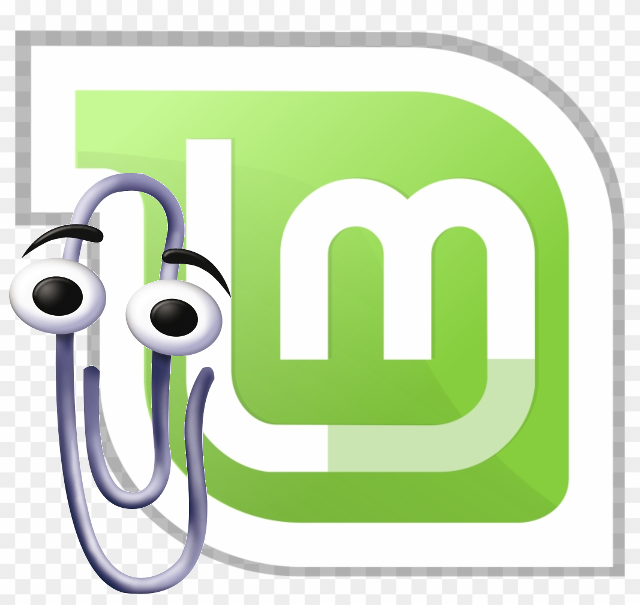Dont you mean: sudo apt update && sudo apt upgrade
Yea
apt-getis so 2010Nope. I meant paru.
It’s insanity. I had to upgrade my work laptop to windows 11 this week.
IT didn’t do their research and turns out our main software isn’t compatible with windows 11 at all. So i had to downgrade back to windows 10. When i did, photos don’t work and the microsoft store wont open.
Windows is such a horrible system, i have no idea why they made it so poorly. I could have installed any distro of linux and had it working well in less than 20 minutes. Upgrading to windows 11 took almost 2 hours and it still didn’t work.
Now IT has to scramble to find a solution before the 14th and we lose all security updates, which they are very concerned about. What a nightmare to be in IT.
It’s always a nightmare being in IT lol
Nobody ever calls to say, “Hey! Just wanted to let you know that my email is working great, keep up the good work!”
We only hear from people when shit is broken.
Being in a windows shop only makes it 100x more difficult and expensive.
Click Update and Shut Down
Windows: Updates and restarts
trollface.jpg
Install Windows - does updates as part of the installation process. Get to desktop and check for updates - more updates to install. Reboot and check for updates again - yet more updates.
No it will update and once that is done it will shut down. But the update includes a restart so it will restart and then require you to type your password so it can finish the update, after which it will shut down.
Well, true, one of the slowest packaging systems in Linux world is still faster than Windows Update.
I’m on arch so its the highlight of every morning 🤣
Fedora does this too, it reboots to install updates…
Gnome Software does this with offline upgrades. It’s optional. Doing sudo dnf upgrade is the same as sudo apt update && upgrade. No reboot. Obviously you should reboot for kernels and certain hooks but otherwise yeah. You can disable gnome software automatic downloads etc
yay
“I use arch … btw”, also btw
For APT enjoyers,
alias yay="sudo apt update && sudo apt upgrade"Also,
alias nay="yay -Rns"Or yeet if you prefer, for the yay/nay or yay/yeet pair.
Thank you for this, I love it. We use Ubuntu at work and I am quite tempted to covertly add yay as an alias.
sudo nix-channel --update
sudo nixos-rebuild switch
nvim flake.nixsudo nixos-rebuild switch --flake .
sudo zypper ref && sudo zypper dup
Fellow OpenSUSE enjoyer right there
Which just sounds ridiculous frankly. Even when you know what it means it still is rediculous.
Is it?
refresh makes it more clear than update that you’re not updating the computer’s packages, just the database of packages
DPKG based distros also need dist-upgrade or full-upgrade, rather than just upgrade, when you are switching versions where removals might be needed
Oh don’t get me wrong, I use Suse on a laptop. The commands strike me as funny looking. Like if I didn’t know what they did.
There is nothing more serious than Zypper!
dnf upgrade
dnf5 made this so much more enjoyable
Is dnf5 on by default in fedora 42? Or is that delayed till 43
dnf5 became default in 41.
Atomic zypper gang!! <3
Non-atomic zypper enjoyers here!!!
Enough of these dumb memes already. Do we really so desperately need to boost our self esteem that fucking much? Yes Linux has it’s cool benefits over Windows. We fucking know.
I agree. Enough with these simple memes - we need full-on propaganda!
You know what my OS doesn’t do? Yeah, exactly. That’s the better question now.
PS I love you
takes 1 minute on an 8 year old machine. foss gang cant meme.
The poster would be more convincing if you hadn’t inverted
apt-get updateandapt-get upgrade…Maybe OP knew all along that they wanted to use the previous package list to upgrade and fetch the new one after! Maybe we’re all actually inverting it…
(I’m just being silly, I recognize that an old package list would probably cause issues with installing or upgrading packages.)
(I’m just being silly, I recognize that an old package list would probably cause issues with installing or upgrading packages.)
No problems anywhere you can always install older versions from a repo.
Upgrade -> update two days ago and then again today will leave me with exactly the same packages as it would if I ran it correctly the first time and then not at all today. Just the state of two days ago.
😭😭
I mean technically you did “update” the OS. It wasn’t a particularly useful command by going second, but I bet it was fast.
If you run it like that every day you will always be one day behind in packages. Not realy that big of a problem (unless on an internet facing server)
It’s fine! You were trying to show how Windows is better because you can’t make a mistake like that and succeeded!
I’m joking
I mean, it’s definitely faster this way around
It accurately got them backwards, the same way I always do. :)
Thank you, I mostly use pacman but have Debian (rasbian?) on raspberry pi and was fully willing to believe I’d been updating it wrong this whole time
That’s the best part of this post. Windows is fully automatic, while on Linux you need to tell apart two terminal commands with confusing naming.
Fully Automatic Update Against Your Will.
Not necessarily. On Arch it’s just “sudo pacman -Syu” and on Fedora it’s just “sudo dnf update”.
I just type “yay”.
I just type “paru”.
I just type help
I just click the “Install Updates” notification when it pops up.
See, it’s super easy on Linux, just different on every distribution.
If you’re too stupid to remember one or two commands there are GUI applications available where you can click “a button” to update your system.
Or make an alias with the update command and name it “update”. This works on every distro.
Ah yes, the way to advocate for Linux is calling users stupid.
If you can’t remember one or two commands then you are in fact stupid. With that said, Linux is for everyone.
There are distros that have auto updates as a feature they ship (Linux Mint comes to mind). There are distros that are basically impossible to break and there are distros where you are responsible for building your own system and keeping it functioning. It all depends on your own needs. Linux gives you the freedom to choose and there are more than one way to do things.
On linux, you can do what you wish. You can use a desktop environment with a GUI software center that pops up a notification that prompts you to install updates. Or update by opening the software center and selecting the ones you want. Or use the terminal commands. Or write an alias so you can type “update” and have it execute all your commands in the right order. Or script it to run silently in the background on an automated schedule.
And you can use your computer during updates, there’s no mandatory update during shutdown/boot.
If I try to update my GPU while I’m running a game sometimes it falls back to integrated graphics and gets slow+warm til I restart. That’s a fuckup I just couldn’t make on windows. Sorry, checkmate fosscommie.
Curious what happens in windows now
fun fact: GPU drivers on Windows run in userspace, because MS got fed up with all the blue screens they caused and kicked them out of the kernel. if the GPU driver crashes, the screen will go dark for a second and then flick back on. if the GPU driver can’t restart then Windows will fall back to software rendering.
Which is what you see happening when updating or reinstalling a gpu driver.
Funny thing is, gpu drivers can still cause a bsod by causing fuckups in the directx driver, which ive seen happen :')
On Mint I set up an automatic update schedule and have been double checking it when I think to. All GUI, no terminal commands. So far it’s been seamless. (Knock on wood)
You think ive touched the apt commands in linux…?
I mean, youre right, but thats because i like to be hands on. But i dont have to if i wanted :pYou dont though. Most linux also have an automatic/GUI option.
Wait I’m confused, did OP invert it or did you?
Op inverted.
apt updateupdates the local package cache of apt so it knows what packages have updates.apt upgradethen installs those updates.
Who even uses apt-get these days?
Yeah
apt-getis so old it officially misses packages thatapt… gets.Whoa, do you have something to read up on that? I’d be extremely surprised, since
apt-getis supposed to be the script-safe variant, i.e. I’d imagine it’s the more stable of the two.It’s actually just personal experience, but I stopped using
apt-geta few years back now because I noticed if I didaptafterapt-getthere would often be a bunch of packages it missed.Edit: looks like it might be because
apt-getcan’tsatisfy dependenciesinstall new packages when upgrading whileaptcan sinceaptis a suite of differentapttools rolled into one.Yeah I’m reading a little bit on it, and it seems like
apt-getcan’t install new packages during an upgrade. On initial reading I was thinking there were specific packages it couldn’t download or something, but this makes sense too. Regardless, this is news to me; I always assumed thataptandapt-getwere the same process, just withapt-gethaving stable text output for awk’ing andaptbeing human-readable. I’ve been usingnalafor a long time anyway, but this is very useful knowledge.I’ve been using
nalafor a long time anywayDoes Simba know about this?
Wait what.
apt-getis made for scripting,aptis interactive. Both should resolve dependencies.dpkgdoes not resolve them.But for interactive usage always use apt, guides using apt-get have no idea what they are doing
You’re right, I misspoke, it’s that it can’t install new packages, it can only upgrade existing ones. I guess I was thinking the only reason it would need to install new packages was if that was a new dependency.
Very weird
apt-get upgrade --with-new-pkgs
aptgenerally downloads more things thanapt-geton my Debian machine.apt-getnever broke anything, but I tend to eye it suspiciously now.
Legitimately didn’t know this and occasionally type
apt-getjust for a bit of frivolity
have been out of the loop for a while. what am I missing, what should I use in the future?


















